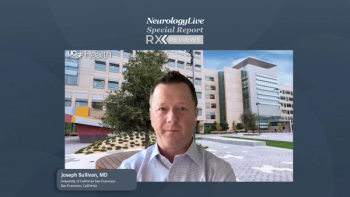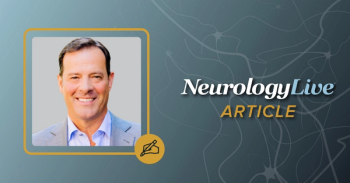
Cell Therapy NRTX-1001 Posts Positive Preliminary Data in Drug-Resistant Mesial Temporal Lobe Epilepsy
Neurona Therapeutics’ single-administration allogeneic cell therapy suggests thus far that the treatment is safe, with signs of efficacy, after reading out data from the first 2 patients dosed.
New preliminary data presented at the
Presented by Alessandro Bulfone, MD, head of operations at Neurona Therapeutics, the data included data from 2 patients: a 26-year-old man with a 9-year history of seizures and an average of 32 seizures per month in the 6 months prior to screening who was treated in June 2022 (Subject 1); and a 59-year-old woman with an 8-year history of seizures and an average of 14 seizures per month in the 6 months prior to screening who was treated in October 2022 (Subject 2).
In the case of Subject 1, who has right hippocampal onset of seizures and has experienced treatment failure with 4 antiseizure medications, the cells were well tolerated. No serious or sever adverse events (AEs) were reported, and there has been a reduction of seizures of more than 90% from baseline, as well as additional improvements on measures of spatial and verbal memory. Focal aware seizures per 28 days dropped to a rate of 5 or fewer per month by 1 month post intervention, and focal impaired seizures per 28 days dropped to a rate of none per month by 2 months post intervention.
In the case of Subject 2, who has right hippocampal onset of seizures and has experienced treatment failure with 3-4 antiseizure medications, the cells were well tolerated. Similar to Subject 1, there have been no serious or severe AEs, and seizures have been reduced by more than 90% from baseline. Focal aware seizures per 28 days dropped to a rate of none per month by 1 month post intervention, and focal impaired seizures per 28 days dropped to a rate of none per month by 4 months post intervention after a slight fluctuation in the 3 months following the procedure.
“The state of the art is the lobectomy and/or laser ablation, but in both cases, there is a 50% to 60% chance that the seizures are reduced by at least 60%, and obviously the surgery is very aggressive,” Bulfone said, noting that NRTX-1001 poses a potential option for patients who do not wish to undergo these procedures, as the allogeneic cell therapy poses promise as a nondestructive option for with TLE originating in the dominant or nondominant hippocampus. Bulfone added that Neurona has connected with the FDA on the treatment’s exploration in patients with bilateral temporal lobe epilepsy, as well.
The testing process for the study includes EEG and imaging, as well as the Rey Auditory Verbal Learning Test (RAVLT) and other tests of memory, mood, and assessment of visual fields. Patients received immunosuppression 1 week prior to surgery, with tapering after 1 year. The NRTX-1001 cells were implanted via stereotactic injection along the long axis of the hippocampus with intraoperative MRI imaging.
Bulfone also pointed to the success of prior preclinical work in this area, specifically work from 2021 that suggested that the implantation of human cortical-type GABAergic interneurons in the hippocampus of mice with kainate-induced mesiotemporal sclerosis can control focal seizures.2 More than two-thirds of the cell-treated animals were seizure-free for the duration of the 9-month study without producing lethargy, memory deficits, or other dose-limiting toxicities. The interneuron cell therapy also reduced hippocampal damage and increased animal survival.
REFERENCES
1. Babu H, Beach R, Burchiel K, et al. First-in-Human Trial of NRTX-1001 GABAergic Interneuron Cell Therapy for Treatment of Focal Epilepsy - Emerging Clinical Trial Results. Presented at: AAN Annual Meeting; April 22-27, 2023; Boston, MA and Virtual.
2. Neurona Therapeutics Presents Preclinical Data from Lead Cell Therapy Candidate NRTX-1001 at Neuroscience 2021. News release. Neurona. November 8, 2021. Accessed April 24, 2023. https://www.neuronatherapeutics.com/news/press-releases/110821/
Newsletter
Keep your finger on the pulse of neurology—subscribe to NeurologyLive for expert interviews, new data, and breakthrough treatment updates.



























